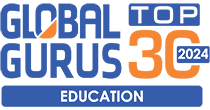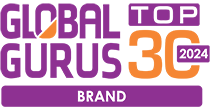Financial education for financial inclusion
July 29, 2020
Financial inclusion refers to the availability and equality of opportunities to access financial services. It is a necessary enabler for Human Development, as well as a global goal. Education is an important means for achieving better financial inclusion. Countries that seek better economic growth rates should focus on financial education.
The unbanked millions
The World Bank reports that 1.8 billion people worldwide are unbanked. They do not have access to banks or basic financial services like savings. More than half of these people live in developing nations such as Bangladesh, China, India, Indonesia, Mexico, Nigeria, and Pakistan. 56% of them are women. The majority of the unbanked have low or no education. 37% of them are out of the labour force. There are many reasons for the existence of unbanked people. Distance to the nearest bank, the cost of maintaining an account, distrust of the system, lack of documentation, and lack of education are some of these.
Creating awareness
The policies to increase financial education are designed with long-term goals. There are many initiatives in progress. The Government of India runs long term programs for raising financial awareness through pension schemes, insurance schemes, microfinance schemes, and subsidy schemes. According to Entrepreneur India, the government created a regulation which states that 25% of new bank branches must be located in unbanked rural centres. Through its various communications the government encourages savings habits in rural regions. Many financial literacy centres and training institutes have been established with government support.
Another such example is Georgia, where the government has extended learning opportunities to the vulnerable segments. These include the unemployed, rural populations, and people facing special life events. Several financial literacy training and awareness campaigns are underway. The government plans to introduce financial literacy topics in the country’s schools as part of the national curriculum.
Financial inclusion and SDGs
Financial inclusion supports economic growth by creating more stable financial systems. It helps mobilize domestic resources through national savings. Financial inclusion plays an important part in the achievement of multiple Sustainable Development Goals (SDGs). It can bring about significant improvements in gender equality, poverty elimination, health, and job creation. Financial inclusion of farmers would enable them to make larger investments during planting seasons, thereby reaping larger harvests.
Remittance companies
A remittance is the inflow of money from a foreign country, usually sent by a relative who works abroad. Nearly 27% of adults in developing countries receive remittances. These are vital for many countries, especially in sub-Saharan African. Many remittance recipients are unbanked. Remittance companies help them receive money despite these limitations.
International money transfers via mobile phones have become very popular. The best known case is M-Pesa in Kenya. In addition to money transfers it has connected millions of unbanked to financial services. The success of the model was in simplifying transactions. It made sending money as simple as sending a text message. The innovative app filled a niche which is usually reserved for banks. In a region largely devoid of banks, M-Pesa solved the problem with cost-effective, secure, and very convenient digital wallets. Now users have little need or desire to visit actual banks.
Financial Education for children
According to research done by NFEC (National Financial Educators Council), children should be taught about finance management at every stage of their growth. Parents and teachers can use various ways to make children understand the value of money. Depending on age children could be given small allowances for doing chores. This would encourage them to become financially responsible. Motivating older children to take jobs during school breaks would achieve the same goals. Similar techniques can be used to inspire habits of saving and investment.
Conclusion
Economic equality is a precursor to many other types of equality. Financial inclusion ensures the participation of more people in the workforce. It increases national production and GDP. Financial independence makes individuals more self reliant. All of this begins with financial education. National governments must create more initiatives to increase financial awareness for the masses. It is a long term goal with potential for significant long term progress.
About the author:
Hemant G is a contributing writer at Sparkwebs LLC, a Digital and Content Marketing Agency. When he’s not writing, he loves to travel, scuba dive, and watch documentaries.























